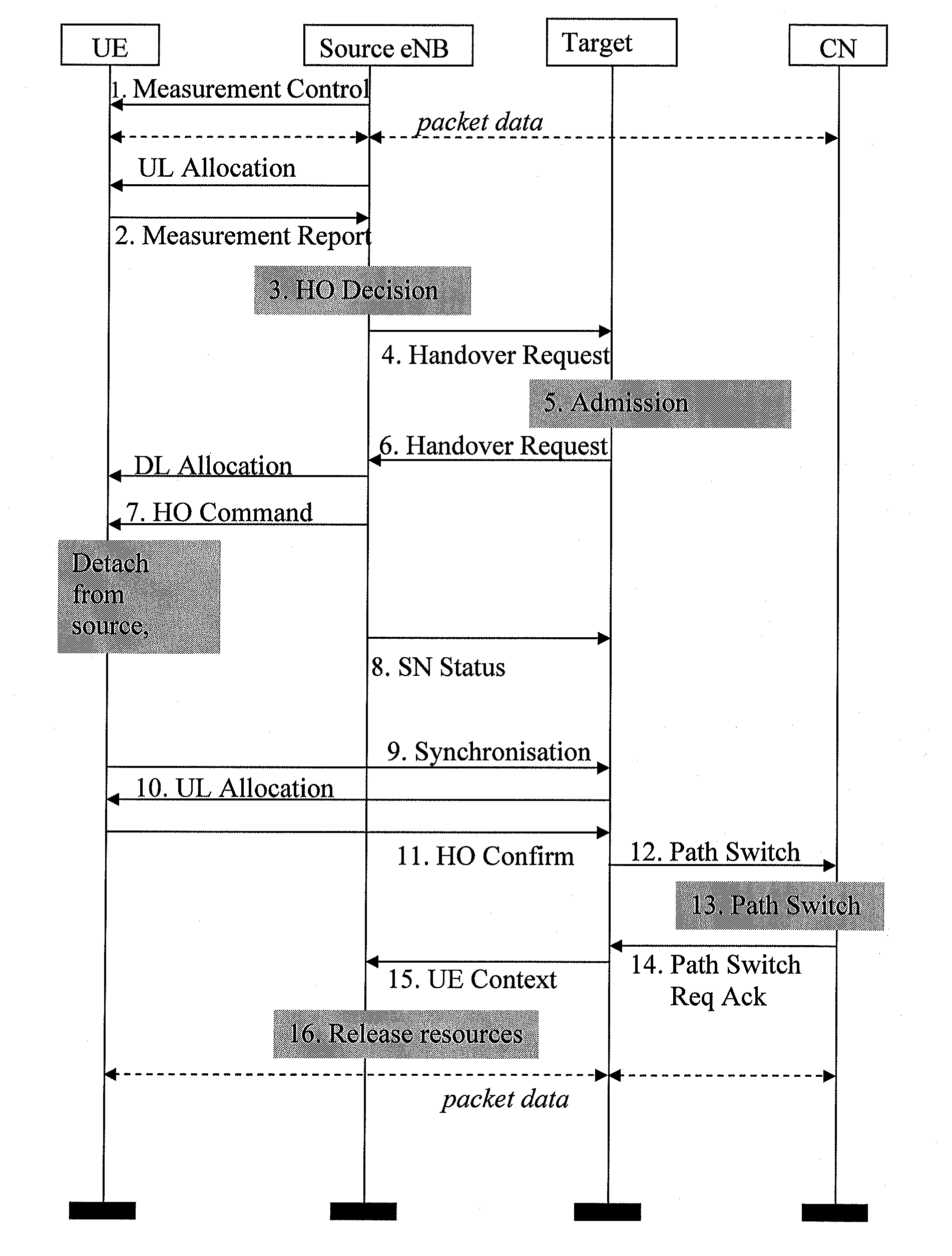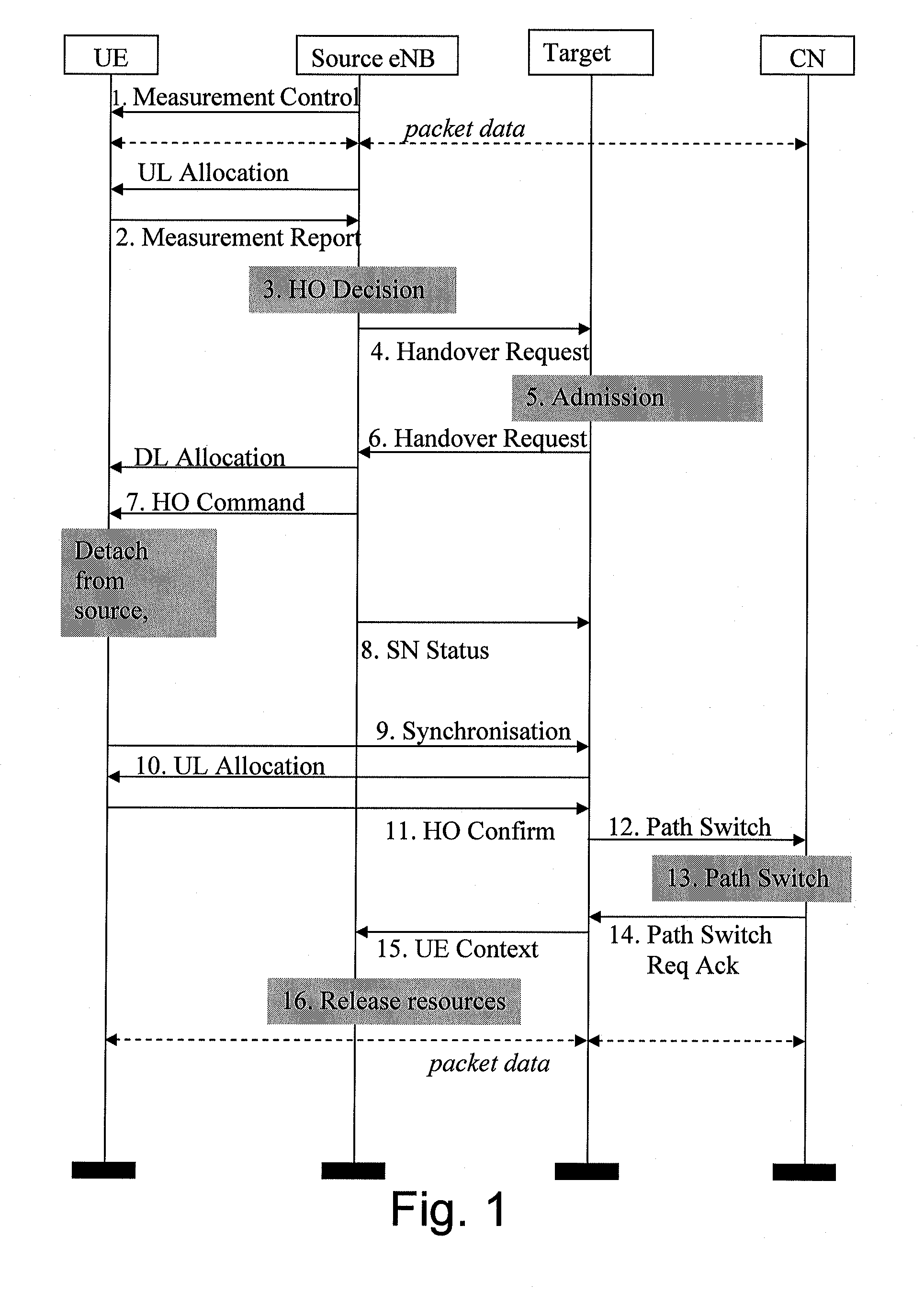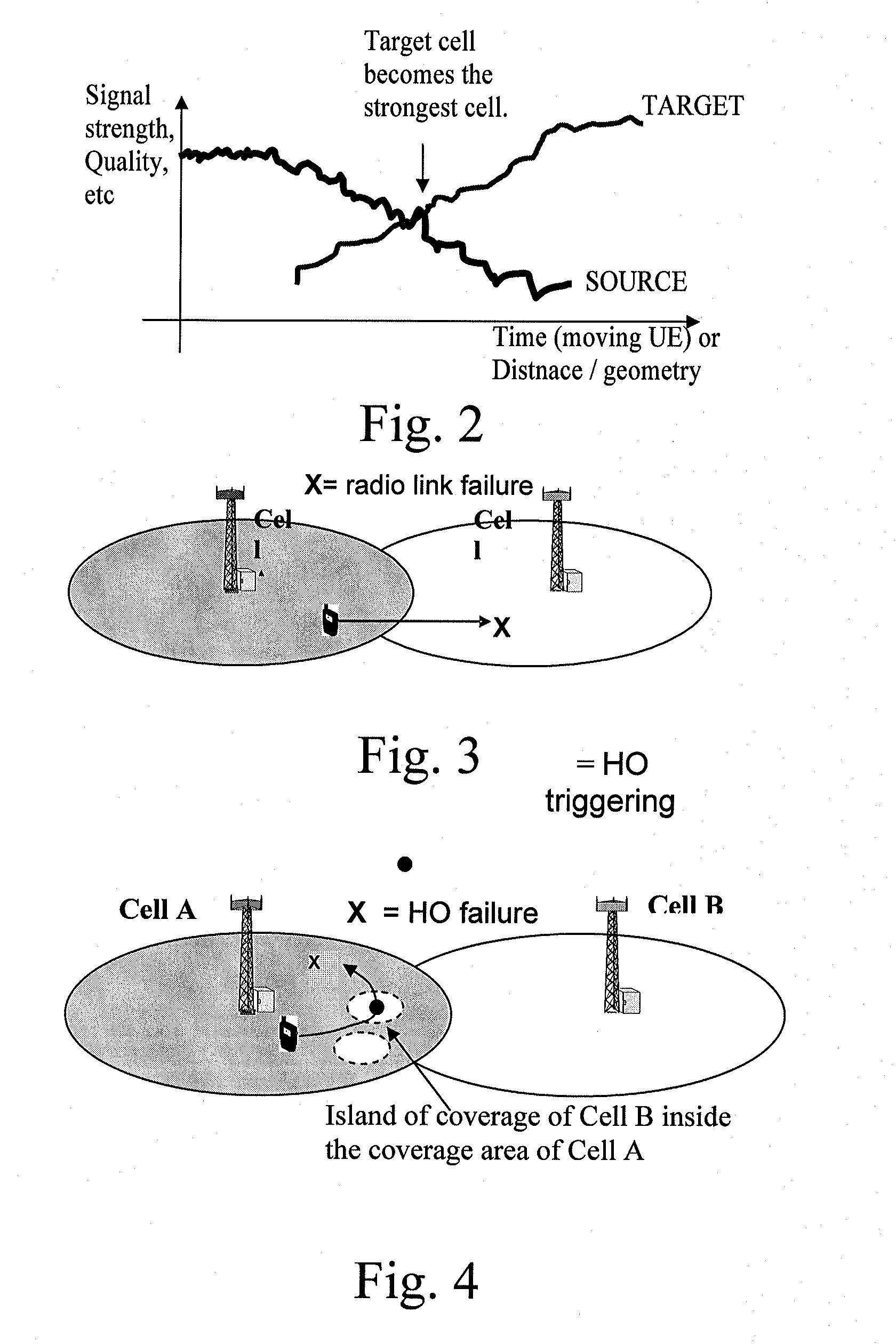Method for handover problem identification
a problem identification and problem technology, applied in the field of handover problem identification, can solve the problems of radio link failure, and resource-consuming ho procedure, and achieve the effect of reducing the cost of network resources, unnecessary hos and inefficient consumption of network resources
- Summary
- Abstract
- Description
- Claims
- Application Information
AI Technical Summary
Benefits of technology
Problems solved by technology
Method used
Image
Examples
Embodiment Construction
[0094]A preferred embodiment represents a means to identify and correct non-ideal handover behaviour, for instance in the E-UTRAN. The solution takes one or more measurements of the radio conditions between the mobile terminal and the target and source cells for successful handovers. Measurement(s) is (are) taken at the end of the handover execution and optionally at the trigger point and optionally at intervals following the handover. Several measurements (pertaining to a particular handover, e.g. cell A to cell B) can be gathered at one point to facilitate analysis. As a result of an optimisation procedure on the analysed results, the handover parameters governing the particular handover may be changed. The method aims to proactively adjust the handover parameters towards an optimum point. This can, for example, eliminate handovers failing in a too-early fashion. The solution to the problem thus may comprise the following steps:
1. measurement capture on successful handovers
2. meas...
PUM
 Login to View More
Login to View More Abstract
Description
Claims
Application Information
 Login to View More
Login to View More - R&D
- Intellectual Property
- Life Sciences
- Materials
- Tech Scout
- Unparalleled Data Quality
- Higher Quality Content
- 60% Fewer Hallucinations
Browse by: Latest US Patents, China's latest patents, Technical Efficacy Thesaurus, Application Domain, Technology Topic, Popular Technical Reports.
© 2025 PatSnap. All rights reserved.Legal|Privacy policy|Modern Slavery Act Transparency Statement|Sitemap|About US| Contact US: help@patsnap.com



